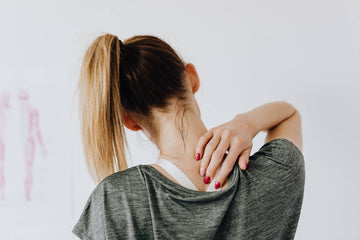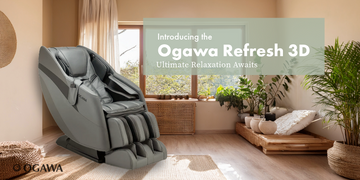Have you ever experienced pain that builds slowly over time? Maybe it came after a particularly grueling training session of overextending your muscles in an active hike. You might have had your first run-in with an overuse injury. In this article, we’ll examine how they could happen to you and how to avoid them.
First, What is an Overuse Injury & How Does it Occur?
An overuse injury occurs when you use a particular set of muscles over time, and they become damaged because of that use.
Most athletes have had an overuse injury at some point in their careers, typically from pushing themselves too hard without focusing on recovery or prevention. However, athletes are not the only ones who suffer from overuse injuries. These injuries can happen to anybody.
You use the same muscles continually when you perform a repetitive action over time. Actions like wiping a tabletop or scrubbing the floor are repetitive actions that could result in an overuse injury.
There are several types of overuse injuries, including:
- Tendonitis (inflammation of tendons)
- Stress fractures (microscopic cracks in bones)
- Bursitis (inflammation of fluid-filled sacs cushioning joints)
- Runner's knee (patellofemoral pain syndrome)
- Golfer's or tennis elbow (epicondylitis)
- Shin splints (pain along the shinbone)
- Rotator cuff injuries (shoulder joint issues)
- Achilles tendinopathy (injury to the Achilles tendon)
- IT band syndrome (inflammation of the iliotibial band)
- Plantar fasciitis (inflammation of the tissue connecting heel bone to toes)
When you get an overuse injury, it doesn’t hit you all at once. Instead, you start getting symptoms slowly; over time, they worsen and become severe. Sometimes, these injuries even lead to reduced mobility.
Factors Contributing to an Overuse Injury
Injuries from overusing muscles typically stem from several potential sources:
- Repetitive movements and activities: Continuous engagement in the same motion or activity without adequate variation or rest can strain specific muscles or tendons, leading to overuse injuries. They can also lead to repetitive motion injuries.
- Poor technique or form: Incorrect posture or technique during exercises or activities can put undue stress on certain body parts, increasing the risk of injury.
- Inadequate rest and recovery: Insufficient time for the body to recover and repair after physical activity can lead to accumulated stress on tissues, increasing susceptibility to injuries.
- Inappropriate equipment or footwear: Ill-fitting or improper gear can contribute to overuse injuries by causing biomechanical imbalances or putting excessive strain on specific body areas, such as joints or tendons.
Either independently or combined, these factors can lead to an overuse injury.
Recognizing an Overuse Injury
So, how can you tell if your injury is from muscle overuse or something else? As mentioned, these injuries tend to linger and worsen over time if they’re not treated. Recognizing the symptoms of these injuries is crucial to having an early and successful intervention.
Initial symptoms might include mild discomfort, aching, or stiffness in the affected area during or after activities. As the injury progresses, symptoms intensify, leading to persistent pain, tenderness, swelling, or restricted range of motion. For instance, tendinitis may cause localized pain and stiffness in the tendons, while stress fractures often induce localized pain during activities that diminish with rest but return later.
Early identification of overuse injuries is crucial for effective treatment and preventing further damage. Ignoring initial warning signs can exacerbate the injury, leading to chronic conditions or longer recovery periods. Regular monitoring of physical discomfort or changes in performance levels, especially during repetitive activities, aids in recognizing these injuries promptly. With these injuries, it may be important to determine the difference between acute and chronic injury types.
Once you spot that you’ve got an overuse injury, you should consult a doctor to see what your next steps should be. Once you intervene early, it’s likely the condition won’t worsen considerably, and you may be able to return to action quickly.
Tips for Daily Life to Prevent Overuse Injuries
Even regular people who aren’t professional athletes run into problems with overuse injuries. For those of us trying to avoid these injuries, we can incorporate preventative measures in our daily activities in several ways:
- Ergonomic workspaces and practices: Adjusting workstations for a more ergonomic workspace at home to promote better posture and reduce strain, including regular breaks to prevent prolonged sitting-related issues.
- Posture and movement awareness: Be mindful of body alignment and movement patterns during daily activities. This can help improve posture and avoid unnecessary stress on muscles and joints.
- Regular stretching and strengthening exercises: Engage in routine stretching to improve flexibility and incorporate strength-building exercises to support muscle and joint health.
- Taking breaks from repetitive tasks: Introducing breaks during repetitive activities to allow for muscle recovery and alternating tasks to prevent overuse of specific muscles or joints.
- Lifestyle adjustments for active individuals: Balancing intense workouts with restorative activities, ensuring adequate sleep and nutrition to facilitate the body's recovery and repair processes.
- Taking massages to help relax muscles and promote blood flow: There are a lot of benefits of massage. Massages can have a restorative impact on the body. Deep-tissue and sports massages can help deal with overuse injuries if they happen.
Treating Overuse Injuries Early
One of the most critical things someone can do when they suspect they have one of these injuries is to seek ways to mitigate and reverse the damage and the pain. Some of the more effective methods of treating an overuse injury at home include:
- Massage therapy: Self-massage techniques using foam rollers, massage balls, or massage chairs can target specific areas experiencing discomfort, helping to alleviate tightness and soreness associated with overuse injuries. The benefits of using a massage chair vs human massage can help with overuse injuries and other muscle stress.
- Ice packs and cold compression therapy: Ice packs can reduce inflammation and ease pain in affected areas. Alternating ice with heat therapy, such as warm baths or heating pads, can further enhance circulation and relax tense muscles, contributing to the healing process.
- Rest and activity modification: Allowing the body adequate time to recover by resting and modifying activities is crucial. Adjusting exercise intensity, incorporating low-impact activities, or temporarily avoiding repetitive movements that exacerbate the injury can prevent further strain and aid healing.
At-home remedies help reduce pain, but if the injury persists, the best course of action is to see a doctor.
Don’t Let Overuse Injuries Cause You Stress
Injuries happen throughout life, but they are manageable in many cases. Minor injuries, such as an overuse injury, can become debilitating if you don’t treat them. At-home treatments, including massage chairs, can help to reduce pain and improve recovery. Injuries usually lead to pain and stress associated with that discomfort. Be sure to treat your overuse injury early so you can sidestep the pain that comes from a long-term problem.
Before implementing any overuse injury treatment options, please consult a healthcare professional to ensure it’s the correct one for you.





